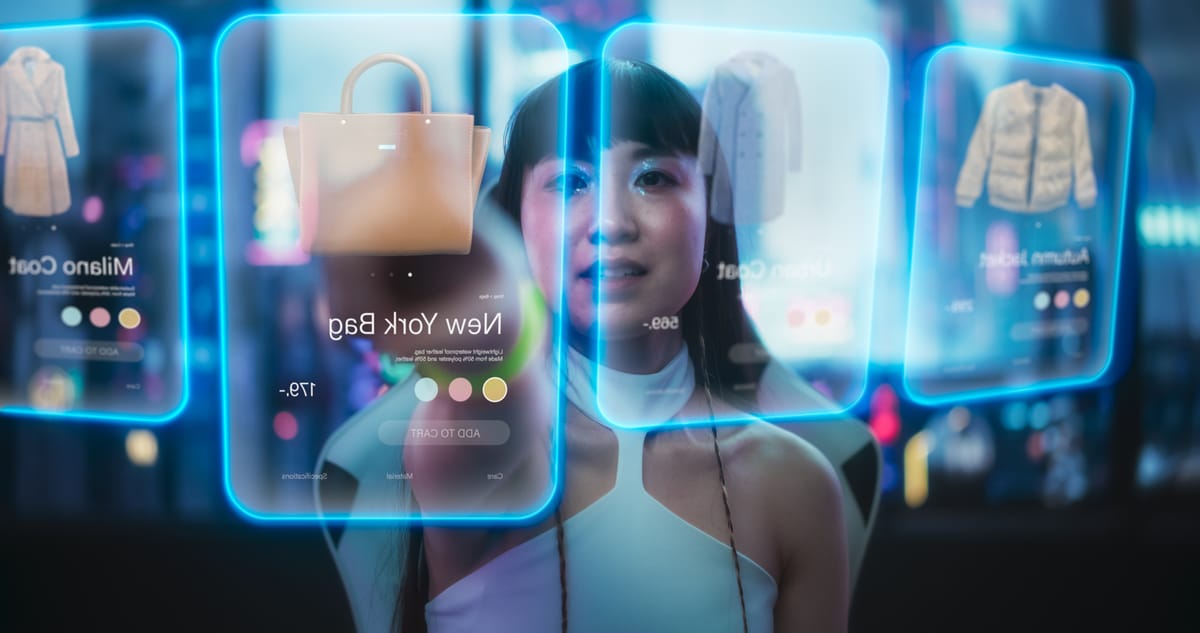The Evolution of Human-AI Interaction: What's Next for UI?

Introduction
The Growing Role of AI in User Interface Design
The relationship between humans and AI is taking center stage, promising immersive and personalized user experiences. Traditionally, our interactions were confined to basic user interfaces (UI), limiting the depth of engagement with devices. Apple's landmark introduction of the iPhone in 2007 revolutionized this landscape with its touch-centric interface and multi-touch gestures, opening the door to creating new ways for users to interact with software. As we move forward, the impact of AI is steering the course of UX design to redefine how we engage with technology.
What Does Human-AI Interaction Look Like Today?
In today's tech scene, AI has seamlessly integrated into our daily lives, with smartphones leading the way. Voice technologies like Siri and Google Assistant take commands, provide tailored suggestions, and offer app recommendations, personalizing our digital experience. Furthermore, the immersive world of VR/AR provides natural and interactive experiences through virtual environments. Wearables, such as the Apple Watch, allow us to manage tasks and monitor our health using voice commands and subtle gestures, making engagement hands-free and effortless.
Anticipating the Future
What could the future of user interfaces look like with the rapid development and impact of AI? It is evident that we will witness a significant evolution in user interfaces across various devices. Our approach to accessing information is already changing, as we are no longer solely reliant on third-party websites for answers. AI is now capable of providing summaries of the information it finds, eliminating the need for users to actively seek out this information.
With the development of LLMs (Language Model Models) and autonomous agents, websites and applications are becoming increasingly data-driven. It is possible to imagine a system that can automatically create a personalized interface for individual users by generating multimodal outputs, such as images, charts, and videos, from raw data alone.
Customized and Adaptive
In the data-driven future that we are already beginning to experience, AI could adapt to your behavior by recognizing your preferences, habits, and engagement patterns. This might mean dynamically adjusting a website's layout, content, and colors based on your interests, accessibility needs, or even location. Ultimately, this results in a highly personalized and constantly refreshed user experience.
Inclusion and Accessibility
With the power to tailor experiences comes significant potential for improving digital accessibility and inclusivity. Imagine digital experiences that offer alternative output modes such as voice, vibration, or haptic feedback. This capability allows targeted output that suits the specific needs of each user.
Immersive Engagement
Virtual Reality (VR) has the potential to make a significant impact on multiple industries and revolutionize our technological experiences in the future. Offering immersive virtual environments, it opens up exciting possibilities across entertainment, education, training, and even healthcare. Continuing to advance and become more accessible, it is expected that it will become more integrated into our everyday lives. We can look forward to immersive gaming experiences, realistic simulations, virtual travel adventures, and even virtual meetings becoming increasingly commonplace in the near future. The potential for VR is so vast it could completely transform the way we engage with technology.
Voice Interaction
By incorporating voice commands and responses into UI design, users could navigate through applications, websites, and various other interfaces simply using their voice. Voice interaction offers numerous benefits, such as increased accessibility for individuals with disabilities or those who prefer hands-free interaction. It also allows for a more natural and intuitive user experience, reducing the learning curve typically associated with traditional UI navigation methods. As this technology continues to evolve, we can expect to see even more possibilities emerging. For instance, voice-controlled virtual assistants may become integrated into our daily lives, providing personalized recommendations and assisting us in completing tasks more efficiently. Furthermore, the integration of AI algorithms into voice-enabled UIs can enhance the accuracy of speech recognition and natural language processing capabilities. This means that users will be able to interact with devices more seamlessly than ever before.
AI and Designs Collaboration
Designers are now focusing more and more on creating interfaces that prioritize the needs and preferences of the end-users. Co-creation between humans and AI is becoming increasingly popular as designers recognize the benefits of involving both human creativity and AI capabilities in the design process. By combining human intuition with AI's analytical power, designers can create innovative and intuitive UI designs that meet users' needs while leveraging the efficiency and accuracy offered by AI technologies. Overall, these trends reflect an evolving landscape where design can be fully focused on delivering user-centered experiences through collaborative efforts with humans and intelligent systems.
Conclusion
Embrace the Evolution of Human-AI Interaction
As technology continues to advance at a rapid pace, incorporating AI into our daily lives has become more important than ever. By leveraging AI technologies such as machine learning and natural language processing, we can create seamless interactions between humans and machines. This not only saves time and effort but also enables us to provide personalized experiences that cater to individual needs and preferences. The integration of AI into various industries has already shown promising results. Embracing this evolution opens up new possibilities for innovation. As we continue to develop sophisticated algorithms and improve AI capabilities, we can expect even more advanced applications in areas such as healthcare, finance, education, and entertainment. We have the opportunity to revolutionize user experiences across various industries. By harnessing the power of AI technologies responsibly and integrating them into our workflows, we can unlock new levels of efficiency and personalization, ultimately leading to enhanced satisfaction for users everywhere.
